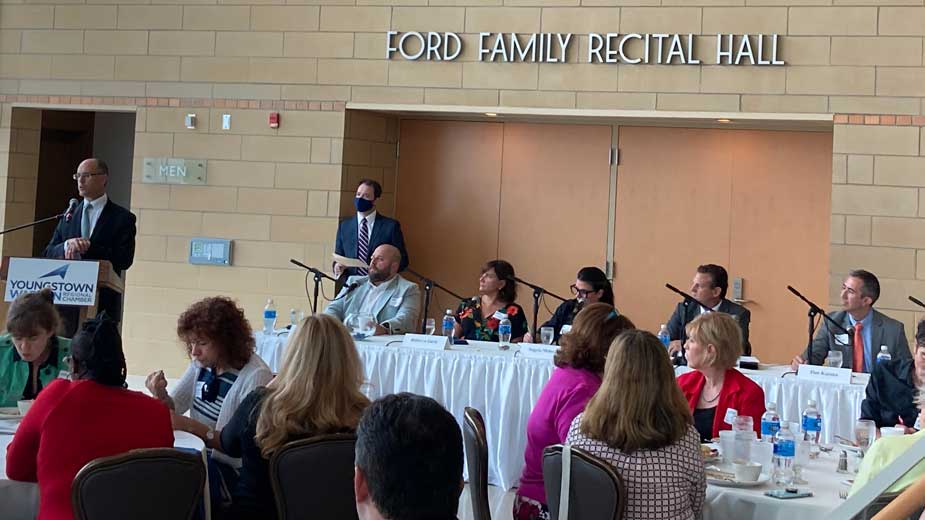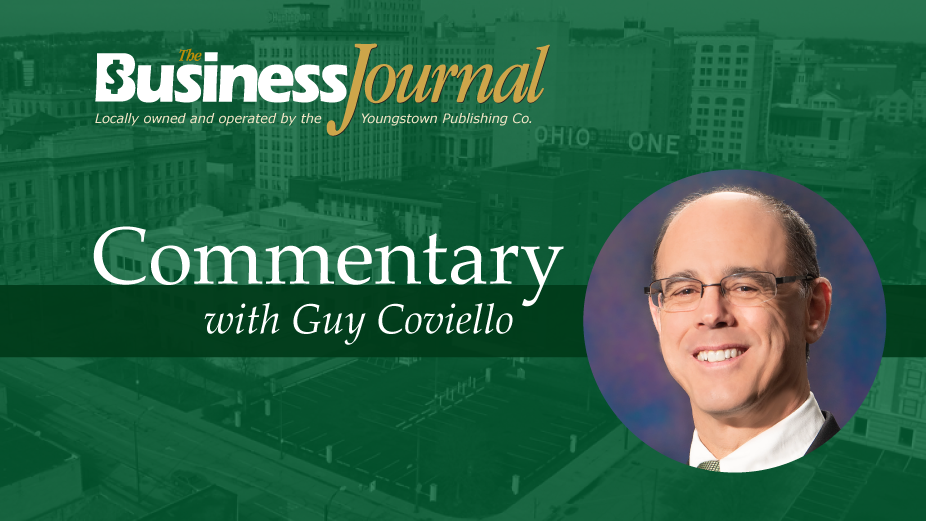Valley Must Put Arts on Display to Gather Full Economic Impact
YOUNGSTOWN, Ohio – When it comes to the arts, the Youngstown area doesn’t find itself lacking, according to Dan Katona, deputy director of the Ohio Arts Council.
“We have that Midwestern modesty,” Katona said. “Maybe we should have more swagger.”
Katona was speaking at a panel discussion Tuesday on the arts and the economy at the Flad Pavilion, in the DeYor Performing Arts Center. Sponsored by the Youngstown/Warren Regional Chamber and The Youngstown Foundation, the discussion’s goal was to take a snapshot of where the arts and tourism industries in the region and state are as the scars left in the economy by the pandemic start to heal.
According to 2019 data, the arts and creative sector had an annual economic impact of $341 million in the Youngstown region. That amount represents just 1% of the arts’ economic impact in the state, even though the Youngstown area has 5% of its population.
The panelists offered opinions on why this area’s arts impact isn’t greater. Many Mahoning Valley residents don’t equate the arts with a high quality of life, suggested Ken Bigley, vice president of JAC Management, which operates Covelli Centre and The Youngstown Foundation Amphitheatre.
Angela Meleca, executive director of Ohio Citizens for the Arts, said the arts industry in general has long suffered from a lack of public relations.
“We need to understand the economic value of the arts,” she said. “We need to look at the iconic arts institutions in Ohio and support them financially.”
Meleca pointed out that when industry leaders consider the state as a place to invest, the first thing they ask about is quality of life. She described Ohio, with its three major cities and many smaller ones, as “the arts capital of the Midwest.” State legislators who control public purse strings must be made aware that the arts are integral engines for the travel and hospitality industries.
Bill Shivers is the regional president of Huntington Bank operations in the Mahoning Valley, which financially supports programming at The Amp and adjacent Huntington Community Alley, downtown. “When we introduce a young student to the world of arts, it makes an incredible difference,” he said. “We have to make everyone aware of what we have in Youngstown.”
The national economy continues to work its way back to pre-pandemic levels, but no industry had a bigger hole to climb out of than live entertainment, which was shut down for more than a year.
“As other industries started to come back, we were still on life support,” said JAC’s Bigley.
JAC employs up to 600 people, almost entirely part-time workers at events and concerts. That, Bigley said, represents the often-hidden human toll of the pandemic on the live events industry.
“It’s not just, ‘Another week with no concerts to go to,’” he said. The part-timers’ JAC jobs are not their main source of income, but it’s important to them in making ends meet, Bigley said.
The concert industry is back on track, but with the threat of further COVID-related restrictions hanging over its head. But even if no further limitations or cancelations plague the industry, it will take much longer than a few years for the concert industry to fully recover, Bigley said.
Becky Davis, development director of The Butler Institute of American Art, noted that the museum’s expenses remain constant whether it’s open or not. Admission to The Butler is free, so the museum relies upon its substantial endowment, institutional giving and government grants, including pandemic relief funds, for revenue.
Meleca, of Ohio Citizens for the Arts, likened the arts industry to a patient recovering from a bad illness. “We are in the hospital, but we are awake,” she said. “The collaborative spirit of this industry across Ohio has been amazing.”
Ohio Citizens for the Arts is a statewide advocacy organization that pursues financial and other support from state government. The pandemic, Meleca said, “highlighted the lack of a [financial] safety net for the arts.” It’s something she intends to work on by showing lawmakers all of the people behind the scenes who create the performances and the exhibitions.
“You can’t be afraid to show [lawmakers] the mess behind the art,” she said, adding “we have a problem in capturing public dollars.”
The conversation briefly turned to workforce development, specifically the need to educate people for careers in the arts.
“The skills that you building in the arts transfer to many other fields,” said the Ohio Arts Council’s Katona.
Pictured: Guy Coviello, left, director of the Youngstown/Warren Regional Chamber, addresses the audience at Flad Paviliion Tuesday at the start of a panel discussion on the economic impact of the arts. Moderator Michael McGiffin is standing at rear. The panelists, seated, are Ken Bigley, Becky Davis, Angela Meleca, Michael McLaren, Dan Katona and Bill Shivers.
Copyright 2024 The Business Journal, Youngstown, Ohio.



